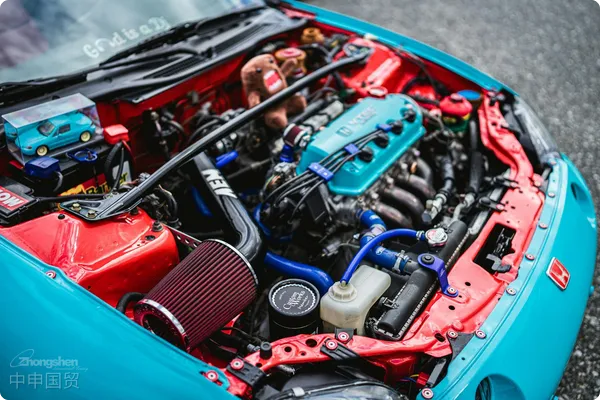- Shanghai Zhongshen International Trade Co., Ltd. - Two decades of trade agency expertise.
- Service Hotline: 139 1787 2118

Contents
ToggleIntroduction
As a core component of automotive emission control systems, oxygen sensors hold a significant position in the global automotive aftermarket and OEM supply chain. Over the past five years, the global import scale of oxygen sensors has grown at an average annual rate of 9.3% (Source: Automotive Aftermarket Suppliers Association). China, as the world's largest...Automotive partsDistribution center, itsImport RepresentationThe technical barriers and compliance requirements for services are continuously escalating. Based on 20 years of practical experience, this article will provide an in-depth analysis of the key aspects and risk prevention in oxygen sensor import agency.
I. Characteristics of the Oxygen Sensor Import Market
1.Technical Classification and Standardization System
- The proportion of wideband oxygen sensors (Wideband) has increased to 58%, gradually replacing traditional switch-type products.
- Comparison of Differences Among EU CE Certification (EN 13309), US EPA 40 CFR Part 86, and China GB 18352.6-2016 Standards
- Differences in Tariff Classification Between Original Equipment (OE) Parts and Aftermarket (AM) Parts (HS 902710 vs. 8542 Series)
2.The high - end market is dominated by Germany (Sachs, Bilstein) and Japan (KYB, Tokico), and emerging production bases in Central and Eastern Europe and Southeast Asia are rising
- The three major brands—Bosch from Germany, Delphi from the U.S., and NGK from Japan—dominate 72% of the high-end market share.
- Trends in Technology Transfer to Emerging OEM Manufacturers in Eastern Europe/Southeast Asia
- Special Customs Clearance Requirements for EPA-Certified Products in the U.S. Market (EPA Form 3520-21)
II. Key Milestones in the Entire Import Agency Process
Phase One: Access Compliance Verification
- Technical Document Verification: Including EC Type Approval Documents, Material Safety Data Sheets (MSDS), and ROHS Test Reports
- Customs HS code pre-classification: Requires consideration of parameters such as sensor type (zirconium dioxide/titanium dioxide), interface form (thread/flange), and wiring harness length.
- Rules of Origin Determination: Key Supporting Documents for Mexican Components to Qualify for USMCA Tariff Rates
Packaging requirements: Shockproof and moisture-proof treatment, outer boxes must be marked with FRAGILE labelsInternational LogisticsScheme Design
- Earthquake-resistant packaging standards: Refer to the ISTA 3A transportation test specifications for compliance.Maritime TransportationBumpy vibration
- Temperature and Humidity Control: Precision ceramic components require a transportation environment maintained at 25±5°C with RH <60%.
- Dangerous Goods Declaration: Smart sensors with lithium batteries must be declared under UN3480 classification.
Phase 3: Practical Operations of Customs Clearance
- Dispute Resolution for Classification: A Typical Case of "Underreporting Prices + Misdeclaring Product Names" in Oxygen Sensors Seized by Shanghai Customs in 2023
- Environmental Tax Calculation Rules: Nitrogen Oxide Monitoring Equipment Eligible for Environmental Protection Tax Reduction (Cai Shui [2018] No. 117).
- Quality and Safety Traceability: Establish a comprehensive traceability system from factory batch numbers to domestic warehousing.
III. Industry-Specific Risks and Mitigation Strategies
1.Technical Barriers to Trade
- New EU Regulation (EU) 2023/443: Requires the Addition of NOx Cross-Sensitivity Testing Indicators
- Countermeasures: Commission TüV SüD in advance for pre-certification testing.
2.Intellectual property disputes
- The Delphi patent EP 1 017 314 B1 pertains to the design of broadband sensor circuits.
- Prevention and Control Plan: Require suppliers to provide an Intellectual Property Warranty Letter (IP Warranty Letter).
3.After-sales quality dispute
- Establish a tripartite quality assurance mechanism (underwriter - logistics - testing agency)
- Introduce the ISO 18562 medical-grade airtightness testing standard.
IV. Innovative Practices in Digital Agency Services
1.Intelligent Customs Clearance System
- Automatically capture the Customs Import and Export Tariff Classification Pre-Ruling Database (CIRS)
- Real-time monitoring of certification standard updates in 30 countries worldwide
2.Supply Chain Visualization Platform
- Analysis of Shipping Schedules and Port Congestion Index
- Inventory Alert and VMI Collaborative Management System
3.the big - data risk - control model
- Supplier Credit Rating (combining D&B and Panjiva data)
- Exchange Rate Fluctuation Hedging Algorithm (Utilizing the Black-Scholes Option Pricing Model)
V. Industry Trends and Strategic Suggestions
1.Impact of technological iteration
- The reconstruction of certification standards driven by breakthroughs in Solid-State Oxygen Sensor (SSOS) technology.
- New energyThe import volume of wide-range air-fuel ratio sensors for vehicles has surged dramatically.
2.Supply chain restructuring directions
- Development Strategy for Secondary Suppliers in Central and Eastern Europe (Hungary/Czech Republic)
- Entrepot TradeCompliance path: Avoid 301 tariffs through distribution via the Singapore VKBS warehouse.
3.ESG compliance requirements
- Conflict Minerals Reporting (Application of CMRT Template)
- Carbon Footprint Tracking (Full-chain Accounting from Bosch's German Factory to China's Bonded Warehouse)
Conclusion
Against the backdrop of the intelligent and electrified transformation of the automotive industry, the import agency for oxygen sensors has evolved from mere trade services to integrated technical compliance services. Professional agencies must establish a three-dimensional capability system encompassing "technical regulation databases + supply chain resilience management + digital risk control" to help clients achieve significant benefits, including an 8-15% reduction in procurement costs and a 20% shortening of delivery cycles, all while ensuring compliance. Importers are advised to prioritize the comprehensive solution capabilities of IATF 16949-certified service providers, leveraging strategic partnerships to achieve continuous optimization of global procurement networks.
(Note: All data in this article are sourced from publicly available reports by authoritative institutions such as the General Administration of Customs and AASA. For specific business operations, please refer to the latest regulations.)
Related Recommendations
? 2025. All Rights Reserved. Shanghai ICP No. 2023007705-2  PSB Record: Shanghai No.31011502009912
PSB Record: Shanghai No.31011502009912









